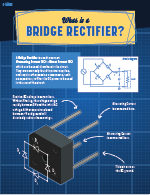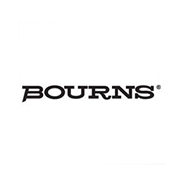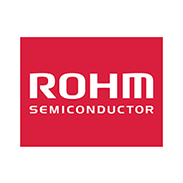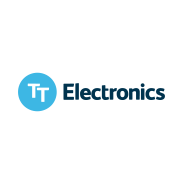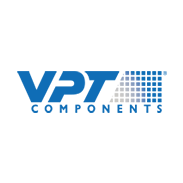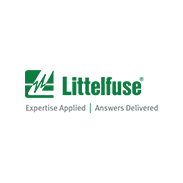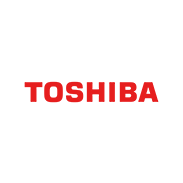Discretes
Discrete Semiconductors Product Categories
View All Discrete SemiconductorsDiscrete Semiconductors Details
MOSFET
A MOSFET (Metal Oxide Semiconductor Field Effect Transistor) is an electronic device used to amplify or switch electronic signals. MOSFETs are the most common field effect transistor (FET) in both digital and analog circuits. MOSFETs are an enhancement on bipolar technology and are the most popular semiconductor-type transistor. A MOSFET provides both an output current and voltage gain into an external load that exceeds the input current and voltage. In basic terms, MOSFETs amplify their input signals.
N-Channel & P-Channel MOSFETs are specific types of MOSFETs. Silicon is “doped” by adding a slight impurity to the silicon to result in an extra electron or a reduction of one electron. N-channel devices have an extra electron in their base structure while the P-channel devices are missing electrons.
Key Parameters
- Source drain resistance: measurement of resistance when a device is on between the drain and the source load
- Voltage drain source: the amount of voltage that can be applied between the drain and the source before the junction breaks down
- Drain current: maximum current the drain can accommodate before risking damage to the device
- Gate charge: the amount of charge required to switch the gate from on to off, and vice versa
Rectifier
A rectifier is a diode operating above 0.5amps and converts alternating current (AC) to direct current (DC) in a process known as rectification. Devices that convert the opposite (DC to AC) are know as inverters. Rectifiers are most commonly found in power supplies. Rectifiers can take standard AC electricity from power outlets and make the power usable in DC circuits. They are also used for signal conditioning. Rectifiers are also known as power diodes and are the largest class of products in the diode family. Devices with a current under 0.5amps are considered small signal diodes.
Key Parameters
- Peak repetitive reverse voltage: the amount of reverse voltage that can be applied before damaging the device
- Reverse recovery time: the amount of time required for the current to reach a specified level after switching from forward to reverse bias
- Maximum average current: highest repetitive current value the device can withstand before failure
- Non-repetitive maximum allowable peak current: highest non-repetitive current value the device can withstand before failure
Discrete Logic
TTI offers a complete range of logic functions and analog switches, including voltage level translators and multiplexers as well as an AEC-Q100 Automotive certified portfolio. TTI world-class Logic suppliers include Nexperia, Toshiba, Rohm and Vishay. Innovation in packaging technology gives designers the flexibility to find a solution to fit their space limitations. Categories include automotive logic, analog, asynchronous interface logic, I/O expansion logic, synchronous interface logic, and control l/O.
Power Management ICs (PMICs)
A PMIC can refer to any chip that is an individual power related function, but generally refer to ICs that incorporate more than one function such as different power conversions and power controls such as voltage supervision and undervoltage protection. Power management ICs are solid state devices that control the flow and direction of electrical power.
- Linear and LDO Regulators
- AC/DC Converter ICs
- Switching Regulators
- Drivers (Gate Drivers, LED Drivers, Motor Drivers)
- Intelligent Power Modules (IPM) including Smart Low and High side Switch ICs
- Battery Management ICs
- Load Switch ICs
- eFuse ICs
Vishay offers their MicroBUCK® and microBRICK® switching regulators as well as their VRPower® (DrMOS) integrated MOSFETs and drivers. Toshiba is a leader in LDO’s and the eFuse, while Rohm Semi’s PMIC line-up consists of a variety of products, including linear regulators, switching and voltage regulators, power management switch ICs, battery management and gate drivers. And look to IXYS/Littelfuse for their High Voltage LED, MOSFET, and IGBT Drivers.
Diode
A diode is a component that allows an electric current to flow in one direction, but blocks it in the opposite direction, like an electronic version of a check valve. Circuits that require current flow in only one direction typically include one or more diodes in the circuit design.
IGBT
The Insulated-Gate Bipolar Transistor or IGBT is a three terminal power semiconductor device that is noted for high efficiency and fast switching. IGBTs are used to switch power in many electrical appliances: variable speed refrigerators, air conditioners, stereo systems with digital amplifiers. IGBTs are a fairly recent invention beginning in the 1980s and 1990s. They rival the speed of MOSFETs with the ability to handle very large amounts of current and voltage. IGBTs are often selected in lieu of MOSFETs in applications over 600 volts. IGBTs are a major component in electric and hybrid automobiles.
Key Parameters
- Voltage breakdown: the amount of voltage that can be applied between the collector and the emitter
- Peak current: maximum current the collector can accommodate before risking damage to the device
- Collector-emitter saturation voltage: voltage between the collector and emitter
Transistor
A transistor is a semiconductor device commonly used as an amplifier or an electrically controlled switch. The transistor is used in a wide variety of digital and analog functions, including amplification, switching, voltage regulation, signal modulation, and oscillators because of its fast response and accuracy. Modern transistors are divided into two main categories: bipolar transistors and field effect transistors (FETs).
(BJT) Bipolar junction transistors are a type of transistor used in applications for amplification and switching signals. They are named Bipolar as their operations involve both electrons and holes (opposite of electrons). Similar to the MOSFET, the bipolar transistor is used in applications where signal switching or amplification is required.
Key Parameters
- Collector emitter voltage: the amount of voltage that can be applied between the collector
- Collector current: maximum current the collector can accommodate before failure
- Current gain: current gain of the device
- Collector-emitter saturation voltage: an indication of voltage strength
- Maximum power dissipation: indicates how much power the device can withstand before possible failure


